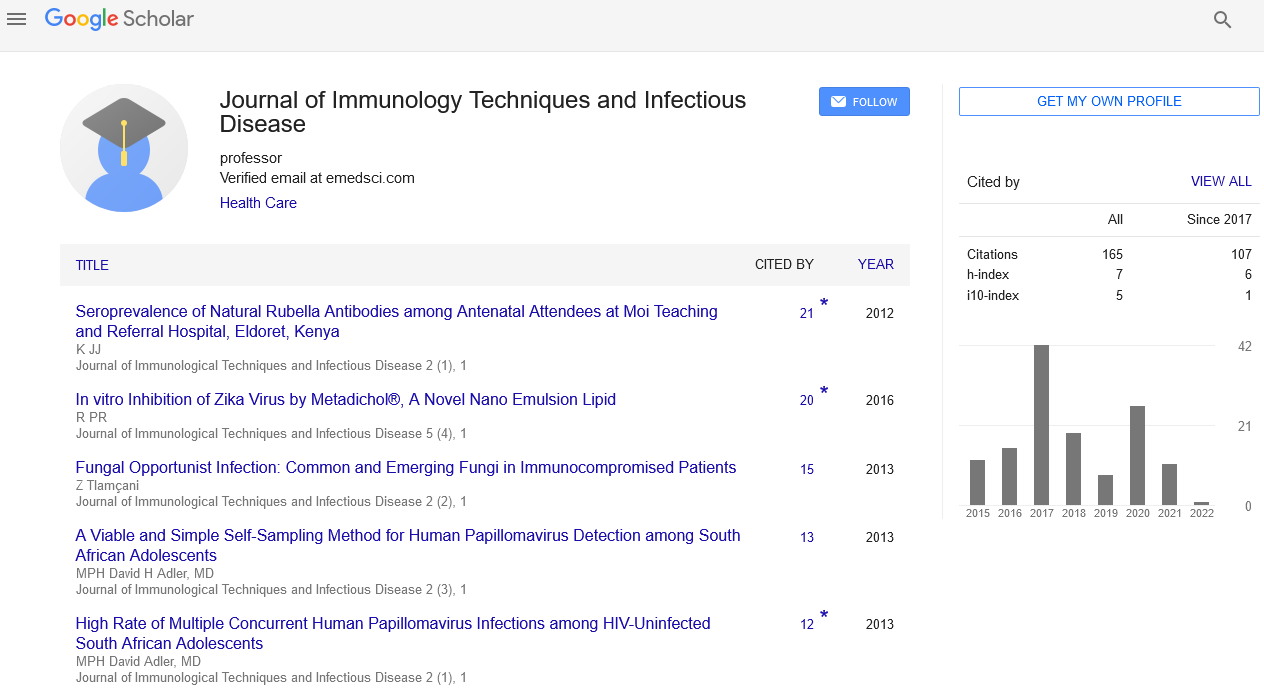Perspective, J Immunol Tech Infect Dis Vol: 12 Issue: 1
Treatment and Management of Ascariasis Parasitic Infection
Isadro Kevin*
Department of Surgery, Hasanuddin University, Makassar, Indonesia
*Corresponding Author: Isadro Kevin
Department of Surgery, Hasanuddin University, Makassar, Indonesia;
E-mail: isadrokevin12@gmail.com
Received date: 01-Feb-2023, Manuscript No. JIDIT-23-92826;
Editor assigned date: 03-Feb-2023, PreQC No. JIDIT-23-92826 (PQ);
Reviewed date: 17-Feb-2023, QC No. JIDIT-23-92826;
Revised date: 24-Feb-2023, Manuscript No. JIDIT-23-92826(R);
Published date: 03-Mar-2023, DOI: 10.4172/2329-9541.1000331.
Citation: Kevin I (2023) Treatment and Management of Ascariasis Parasitic Infection. J Immunol Tech Infect Dis 12:1.
Description
Ascaris lumbricoides is the parasite that causes ascariasis, a parasitic infection of the small intestine. Children are more likely than adults to get this condition. The infection usually occurs after a child puts his hands in his mouth after playing in soil infested with roundworm eggs. Consuming unwashed fruit or vegetables cultivated in contaminated soil can potentially lead to ascariasis. Although the infection can occur anywhere, it is more common in underdeveloped countries with poor sanitation and in locations where human faeces is used as fertilizer. The most frequent type of worm infection in the world is roundworm infection. Roundworm eggs live in fecescontaminated soil. The eggs can enter the body via orally.
Roundworms can live for up to two years in the small intestine. The worms are about the size of a pencil. They can reach a length of about 13 inches reproduce really quickly. Female roundworms can lay up to 200,000 eggs every day. These eggs exit the body via bowel motions. If a child injest a roundworm egg, it will enter into baby worm in the intestine (larva). Larvae can enter the bloodstream through the intestinal wall then make their way through the lungs and into the throat. They are subsequently ingested once more and pass into the small intestine develop into adult worms.
Symptoms
The majority of adolescents with A.lumbricoides infections show no signs or symptoms. Children can have stomach cramps and, in severe cases, intestinal obstruction, which can result in vomiting. Worms that enter the bile ducts can clog them and infect the liver, pancreas, or both. When the larvae of the roundworm travel into the lungs, they can induce allergic lung inflammation (pneumonitis) as well as fever, cough, and wheezing. Worms can sometimes be seen coming out of the anus, mouth, or nose.
Treatment and diagnosis
Instead of traditional stool sampling, newer highly sensitive diagnostic methods would be most useful in communities with moderate (30%-70%) prevalence rather than very high or low prevalence, and they may be more useful for screening adults, who have a lower worm burden and prevalence than children. If child has a history of roundworms and symptoms, physician will advise a stool sample the child's faeces may be examined under a microscope for roundworm eggs or worms. Roundworms are usually readily treated by taking a medicine that kills the worms in approximately three days. Albendazole and pyrantel are two medications that are regularly used to treat. Surgery may be required in rare circumstances to treat a severe intestinal obstruction caused by roundworms. The paediatrician may recommend a single dose of albendazole or three days of pyrantel or mebendazole to treat A.lumbricoides infections.
Surgery is sometimes required to relieve an intestine or bile duct blockage. To avoid infection- maintain good hygiene, always wash hands with soap and water before handling food, thoroughly wash fresh fruits and vegetables, when travelling, exercise caution, use only bottled water and avoid eating raw vegetables unless they can be peeled and washed.
 Spanish
Spanish  Chinese
Chinese  Russian
Russian  German
German  French
French  Japanese
Japanese  Portuguese
Portuguese  Hindi
Hindi 
